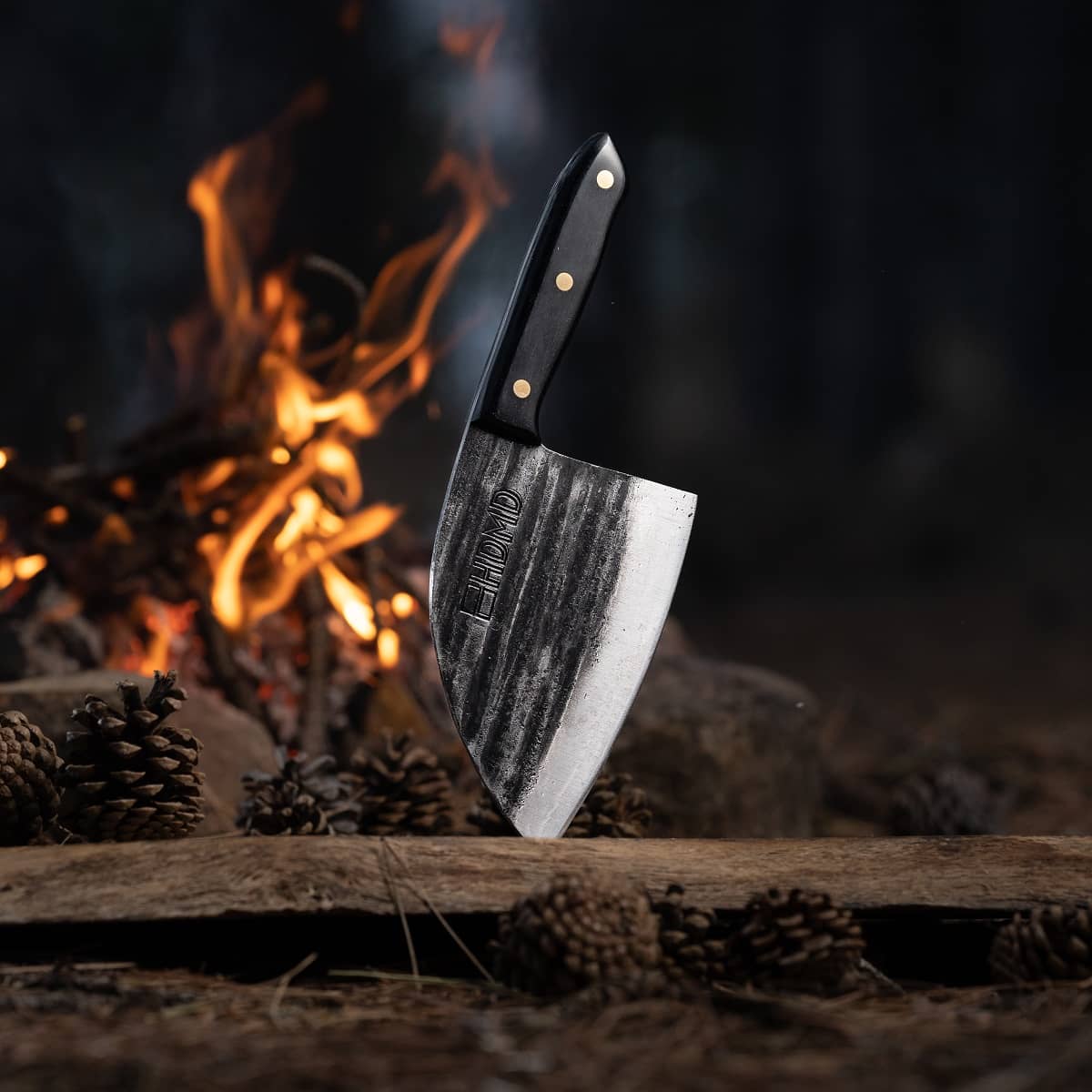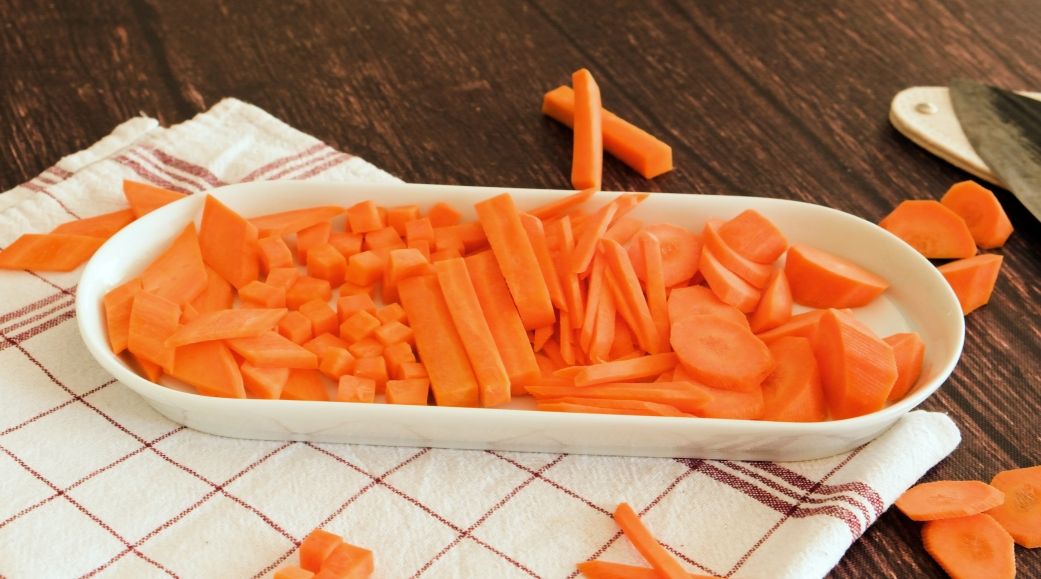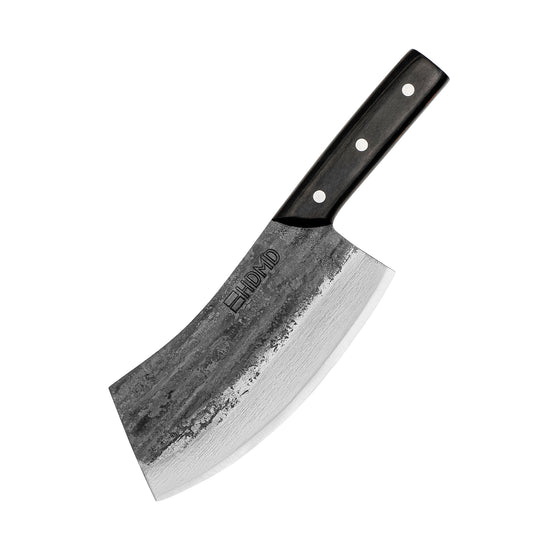While carrots might not be everyone’s favorite vegetable, they offer considerable health benefits. For example, they contain vitamin A which helps maintain good eyesight. They are also great for losing weight and lowering blood sugar. Carrots can be the highlight of one dish when cooked correctly. However, you have to know how to cut carrots first.
Basic carrot cutting can include slicing, batonnet, julienne, mincing, and oblique cutting. There is also a more fancy cutting technique that produces flower slices from carrots.
Before you can cut anything, you need to prepare by gathering the right equipment. You also need to peel or wash the carrots. These topics will be covered in this article, in addition to fantastic recipes that use carrots to enhance their flavor.
What types of carrots are there?
Before discussing how to cut carrots, you should know about the varieties of this vegetable that exist. Carrots can either be Eastern or Western. Eastern carrots have a yellow or purple appearance and are not as well-known as the Western types. It is believed that they originate from Afghanistan, though they also grow in other locations such as Russia and India.
Western carrots are mostly orange and apparently emerged through selective breeding of Eastern varieties in Holland or Spain around the 16th or 17th century. This is what most people think of when they imagine carrots. There are four main types:
- Imperator
- Danvers
- Nantes
- Chantenay
Each has its own appearance, taste, and size. Also, they all grow best in different soils. For example, the imperator is a large carrot (around 10 inches) that is sweet. Nantes carrots have a constant diameter and are good for making juice. Chantenay carrots grow well in rocky soils. Danvers are medium size carrots with a rich orange color.
Some carrot types work well in certain dishes. You have to experiment to find out which one suits your taste buds ― do not be afraid to try new varieties. Of course, if you can find Eastern-style carrots, feel free to try them as well.
Preparation
Collect your knife & cutting board
You need to prepare your cutting surface for this task. Ensure that your cutting board is clean and dry. A standard chef knife will work fine, but if you have a paring knife, that is perfect for slicing carrots. Carrots can be quite hard, so your knife should be sharp enough to cut through them.
Here is a reminder of how to keep your blade razor-sharp.
Cut off the stem
When carrots are harvested, they consist of the main (typically orange) root, plus the stem and leaves. When you buy them, part of the green stem is still attached to the vegetable. This is inedible. Before you start cooking, you need to cut this part off.
Peel the skin
If the carrot does not have dry skin, this step may not be necessary. If you decide to leave the skin on, make sure that you wash the carrot before cutting it. If your carrots have rough and hairy skin, then this texture can spoil your meal. You can remove the skin with either a peeler or a knife. Be extra careful with the latter.
Once you have completed these steps, you are ready to start cutting your carrots.
How to cut carrots in 6 basic ways
Bias cut
Bias cut in culinary refers to slicing ingredients diagonally, creating larger surface areas for even cooking and attractive presentation. A fairly common and easy method for all kinds of vegetables.
Step 1. Make a diagonal cut on the carrot. Use it as a guide for the following cuts.

Step 2. Keep cutting diagonally to create oval-shaped slices.

Batonnet
Batonnet is the French word for a small stick. Indeed, that is the goal of this technique.
Step 1. Slice one side of the carrot to make a flat surface. Rest the carrot on this flat side.

Step 2. Divide the carrot into 2 sections, each a few inches long (depending on the length of the vegetable).

Step 3. Each of those sections can be divided into four rectangular sticks, each ½ an inch thick.

Julienne
Julienne is a technique aims to create fine carrot sticks. What you need to do is follow these steps:
Step 1. Stack a few intact carrot slices together. You can use the bias cut carrots we introduced above.

Step 2. Cut the stack carrot slices into matchstick thin strips.

Dice
Dicing carrots will produce cubes. You can make large cubes by cutting a whole rectangular carrot and into several even cubes. Medium size cubes are made by first using the batonnet technique and then cutting along the sticks to create the cubes. Diced carrots are useful for making soups or mash.

Oblique cut
An oblique cut in culinary involves slicing ingredients diagonally, creating elongated, angular pieces for a unique presentation and even cooking.
Step 1. Begin by cutting off the ends of the carrot, then cut a diagonal piece.
Step 2. Turn the carrot slightly to a different angle, continue cutting for a roll shape.

Diamond cut
The diamond cut in culinary refers to slicing ingredients into rhombus-shaped pieces, adding an elegant touch to dishes. Here is how to do it:
Step 1. Cut off the ends and one side of the carrot to make a flat surface.

Step 2. Slice the carrot into thin, even rounds

Step 3. Make diagonal cuts repeatedly following at same angle.

How to cut carrots in a fancy way
If the techniques listed above are too easy, we have another option for you to try. Here we will show you how to cut a carrot into flower slices. This takes a bit more skill, but the carrot pieces look beautiful in any dish.
- Prepare your carrot by peeling or washing it and by removing the stem.
- Cut off both ends of the carrot so that they are flat. Also, chop the carrot in half to produce two cylinders ― these pieces are easier to handle.
- Use your knife to cut into one cylinder along its length. Do not cut too deep. Then, make another cut close to the first one at a 45° angle to form a groove.
- Remove this material from the carrot to create the groove. Rotate the carrot and repeat this step three or four more times around the circumference. Try to keep an even distance between grooves.
- Do this for both halves of the carrot. When you have, each cylinder should have four or five v-shape grooves.
- Lastly, cut both cylinders into thin slices (this is the first basic method listed above). Instead of being plain discs, each piece of carrot will resemble a pretty flower.
How can you store cut carrots?
Source: Youtube
Place them in jars
This works with most types of cut carrots, but especially carrot sticks. Place them inside a jar and fill this with cold water. You must close the jar’s lid tightly. For maximum freshness, replace the water every day for the duration of the storage. Do not keep carrots like this for more than a week.
By using this method, the carrots will retain their water content and stay crunchy.
Keep them in bags in the fridge
Wrap your cut carrots in damp tissues/paper towels, then place them inside a plastic zip bag. As with jar storage, this will prevent the carrots from becoming dry. Similarly, the carrots will be edible for around one week.
Freeze them
This method will keep cut carrots edible for the longest. You can cut the carrots up in whichever pattern you like. For the best results, place them on a tray in the freezer for a couple of hours until they have solidified. Transfer them to a zip bag afterward for long-term storage ― the previous step prevents the pieces from sticking together.
Without blanching (explained below), you can expect frozen carrots to last for up to two months.
Blanche them
Blanching involves boiling the carrots very briefly (for a couple of minutes) to start cooking them. Then, you rinse the carrots in cold or ice water to halt the cooking. Blanching slows down the rotting process and can be used before any of the above methods to make cut carrots last even longer.
Simple carrot recipes
Carrot cake
Source: Inspired Taste
A sweet treat is not what springs to mind when you imagine carrots. Yet, carrot cake is one of the most delicious desserts you can make. Julienne carrots form part of the cake batter along with eggs, sugar, flour, and cinnamon. Decorating the cake with icing and nuts is a finishing touch that makes it very rich.
Click here for the full recipe.
Honey roasted carrots
Source: Downshiftology
This recipe has both sweet and salty flavors that combine for a healthy snack. It is so easy to make too. All you have to do is marinate your carrots in honey, garlic, butter, salt, and a few other spices. Then you simply place them on a tray and into an oven for a short time. These carrots go well with lots of main dishes.
Carrot & orange soup
Source: Elle Republic
This soup has a tangy taste from the orange. After heating butter with salt and onion in a pan, you add diced carrots plus orange juice and zest. In less than half an hour, the carrots will dissolve and the mixture will be ready. You can then add extra seasoning. This hot soup is healthy, tasty, and filling.
Do I need to remove a carrot’s skin?
A common myth is that you need to peel a carrot before eating it. This is not always necessary because the skin is as edible as other parts of the carrot (except for the stem). Furthermore, some vitamins are mainly located in the carrot’s skin, so you will enjoy more health benefits by eating the skin too.
Of course, if the skin is dry, dirty, or unappetizing, feel free to peel the carrot. But remember, the skin is not harmful as long as you wash it.
Do carrots help you to see in the dark?
In a way, yes. If you have a vitamin A deficiency, you have low amounts of light-detecting molecules in your retina. Carrots are rich in vitamin A, so can improve the light sensitivity in your eyes by producing more light-sensitive chemicals. This will improve your overall vision ― not just at night.
Carrots offer few vision improvements if you have no vitamin A deficiency.






